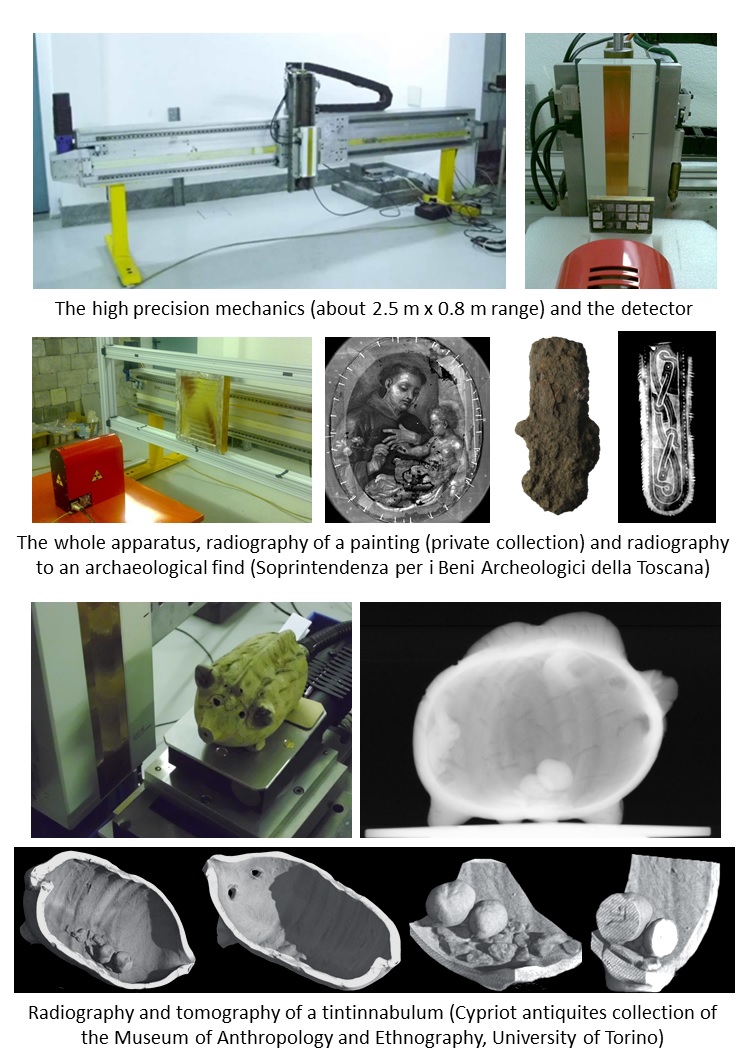X-Ray Imaging Laboratory
The Torino Physics Department and INFN division are equipped with a laboratory for X-Ray digital radiography and tomography. The laboratory is mainly used for the analysis
of objects in the field of cultural heritage, but study in other fields are also carried out.

X-ray imaging is now widely used in the Cultural Heritage field because of its non-invasivity and for the high number of information which can be obtained on the inner structure
of an object. A new instrument for X-ray radiography (RX) and tomography (TC) has been developed by the Physics Department and the INFN. It is based on a microfocus Hamamatsu
L8121-03 (40-150 kV; 10-500 μA; 5-50 μm spot size) or GE Eresco 160MF4 (10-160 kV; 0.5-10 mA; 0.5 mm IEC336 spot size) X-ray source, a rotary stage (used only for
tomography) and a linear X-ray TDI camera, Hamamatsu C10650-321 (48 μm pixel size, 12 bit output, max 93 keV), moved by a high precision mechanics (about 2.5 m horizontally
and 0.8 m vertically). GE Eresco 160MF4 X-ray source was donated by the Torino Rotary Club in 2014.
A frame to fix paintings and larger objects is also available, allowing radiographies on relatively large areas. The possibility to change distances among the analysed object and both
the detector and the source makes the instrument very versatile, allowing to analyse both small objects (exploiting a high magnification) and bigger ones (analysing large areas).
Moreover many parameters, like X-ray energy, current, integration time and distances, can be optimized in real time, allowing to obtain the best configuration in short time.
A similar, but bigger apparatus to perform digital radiography and tomography analyses also on large works of art (up to about 3.1 m x 2.7 m for RX and up
2.5 m x 2 m for TC) was built during neu_ART project and is available at CCR "La Venaria Reale".
